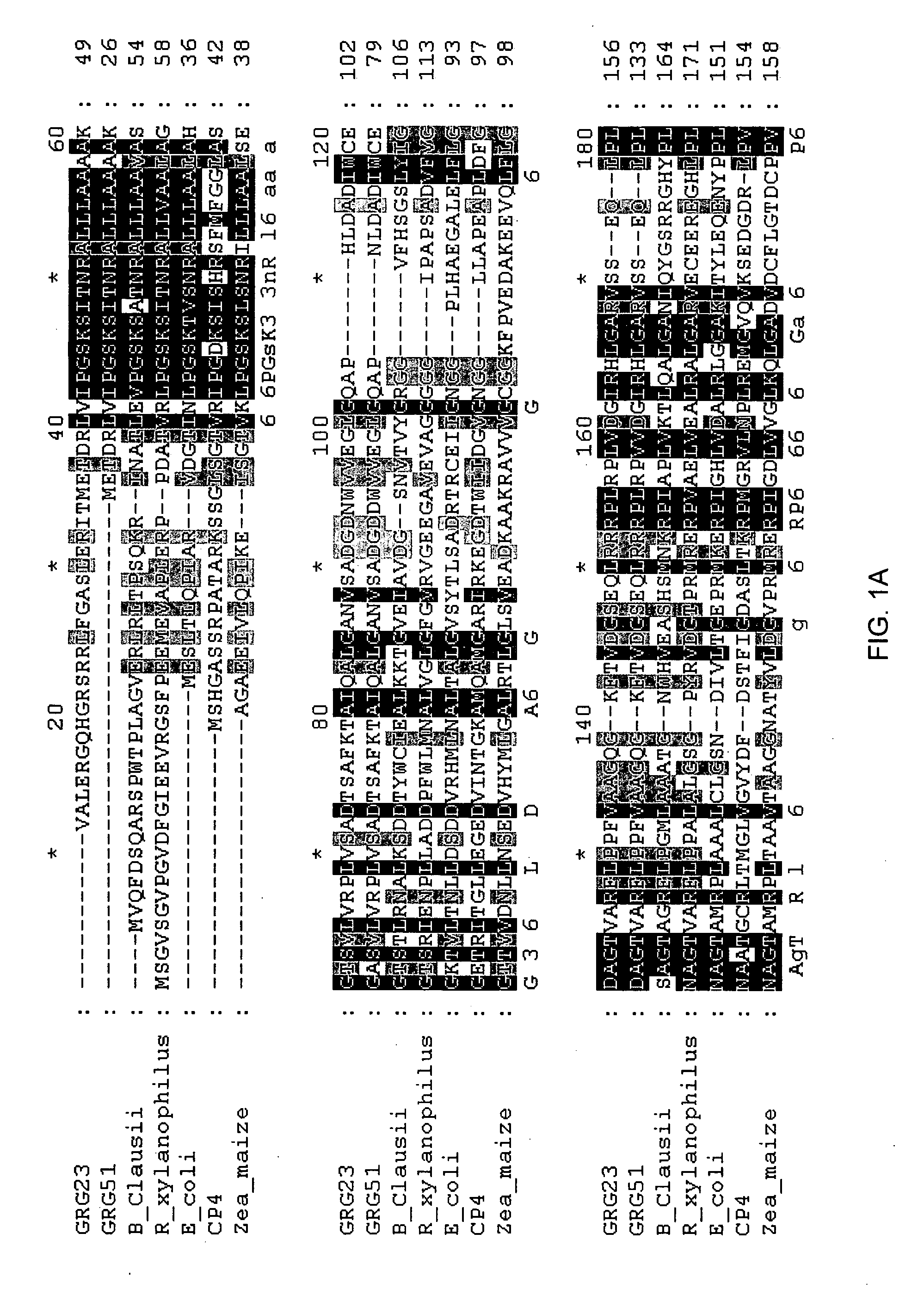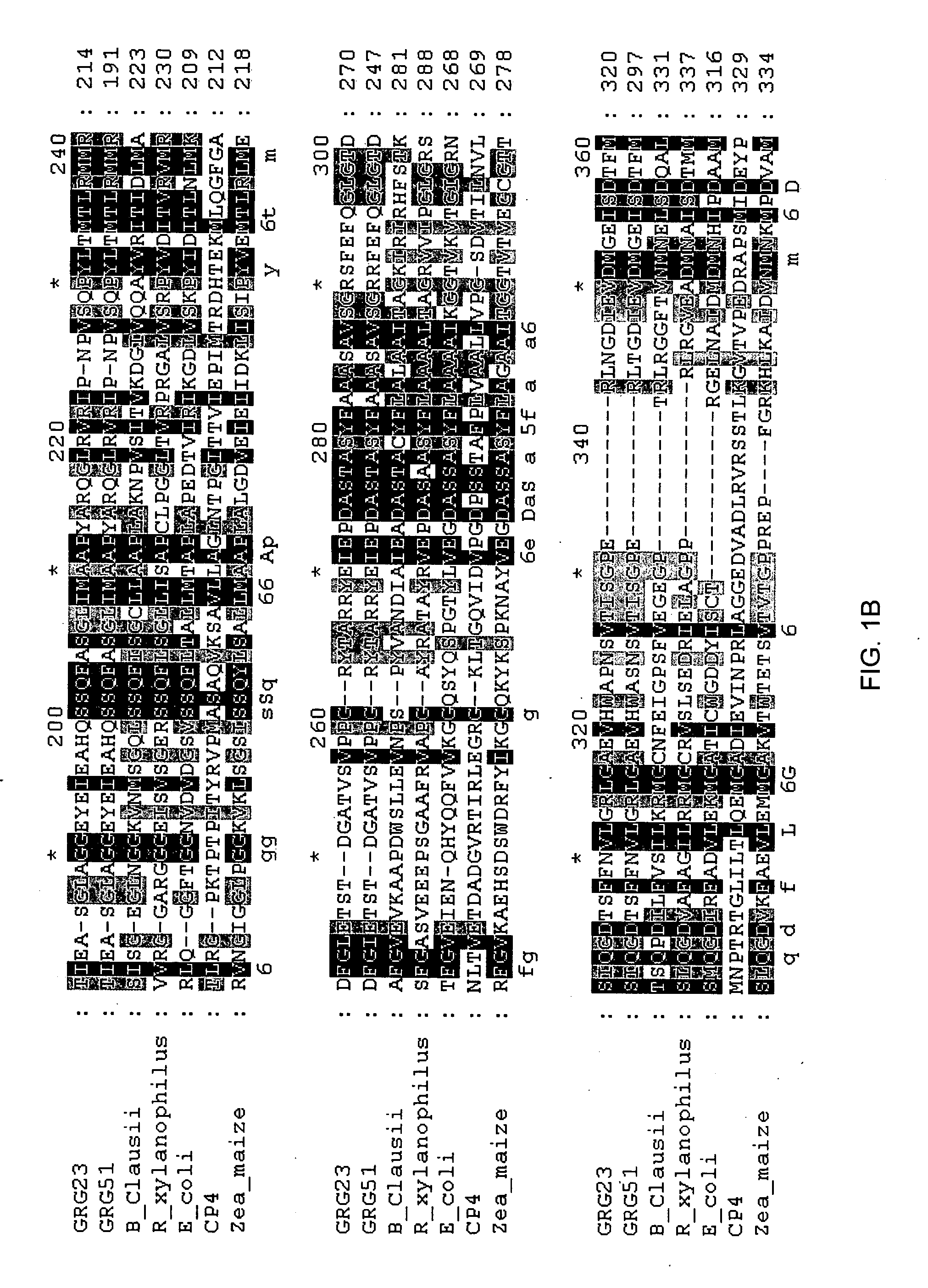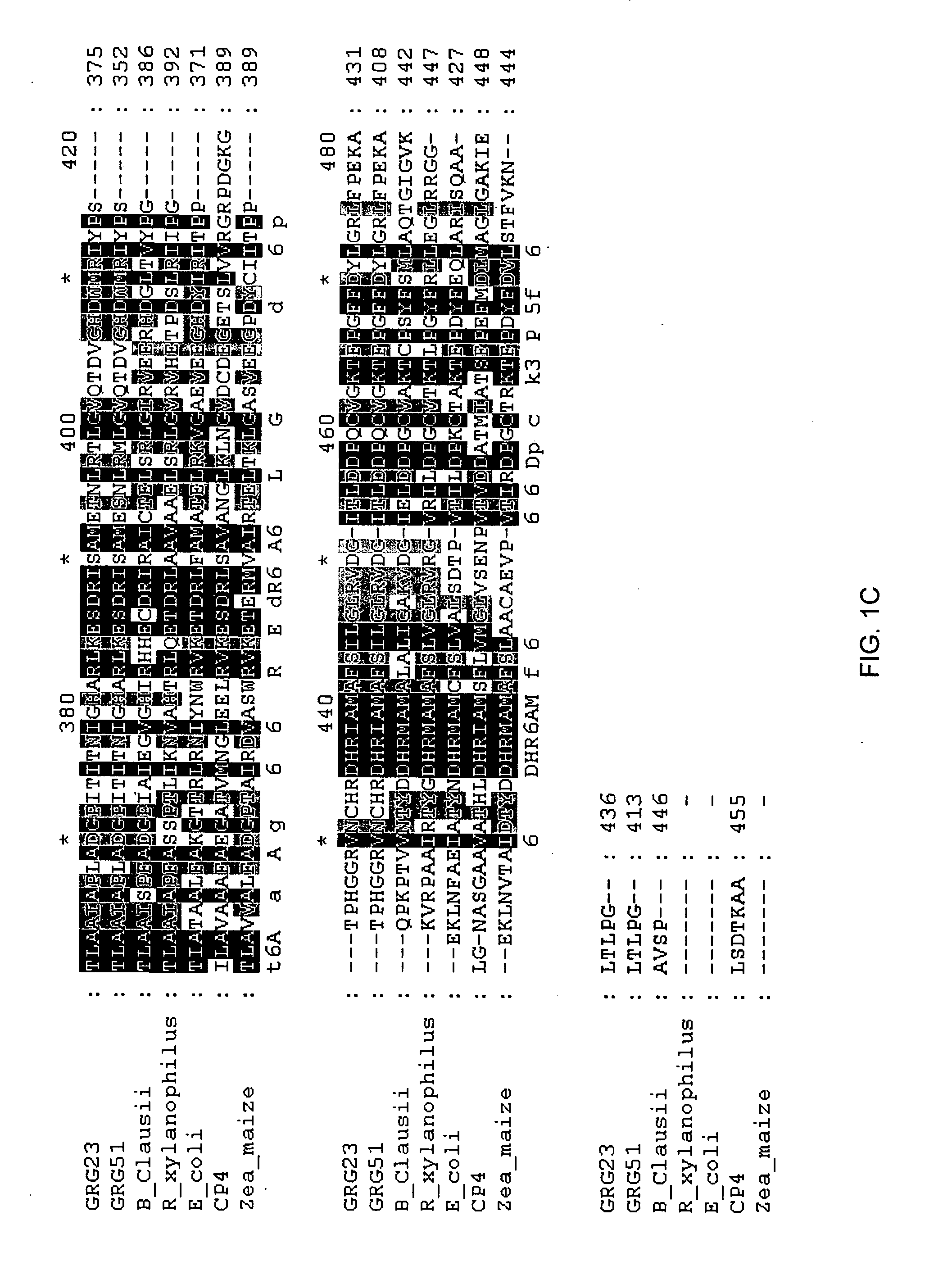GRG23 and GRG 51 genes conferring herbicide resistance
a technology of herbicide resistance and gene expression, applied in the field of genes encoding herbicide resistance, can solve the problems of toxic to bacterial cells, not only killing plant cells, but also toxic to these bacteria
- Summary
- Abstract
- Description
- Claims
- Application Information
AI Technical Summary
Benefits of technology
Problems solved by technology
Method used
Image
Examples
example 1
Isolation of ATX21308
[0080] ATX 21308 was isolated by plating samples of soil on Enriched Minimal Media 3 (EMM3) containing phosphates and 50 mM glyphosate. Since EMM3 contains no aromatic amino acids, a strain must be resistant to glyphosate in order to grow on this media.
[0081] Approximately one gram of soil is suspended in approximately 10 ml of water, and mixed in a vortex mixer for 5 seconds. 100 μl of this suspension is added to 1 ml of EMM3 with phosphate but no glyphosate. EMM3 contains (per liter, pH 7.0): 10 g sucrose, 1 g NH4Cl, 0.2 g MgSO4.7H2O, 0.01 g FeSO4.7H2O, 0.007 g MnSO4.H2O and 10 ml of phosphate solution containing (per liter, pH 7.0) 210 g Na2HPO4 and 90 g NaH2PO4. The culture is shaken on a tissue culture roller drum at 21° C. overnight and then plated onto EMM3 agar containing 50 mM glyphosate. After three days, the isolate is plated onto Luria Bertani (LB) agar to confirm single morphology. After six days, a single colony is streaked onto EMM3 agar contain...
example 2
Preparation and Screening of Cosmid Libraries
[0082] Total DNA was extracted from a culture of ATX21308 using methods commonly known in the art. The DNA was partially digested with restriction enzyme Sau3A1 and ligated with SuperCos (Stratagene) vector fragment according to the manufacturer's directions. Ligation products were packaged into phage particles using GigaPack III XL packaging extract (Stratagene), transfected into E. coli cells, and plated on LB Agar containing 50 μg / ml kanamycin to select for colonies containing cosmids.
[0083] Individual colonies were picked into 384-well plates containing LB broth and 50 μg / ml kanamycin, and grown to saturation. Cells from these cultures were diluted 1:10, then pinned onto M63 agar plates containing 50 μg / ml kanamycin, and either 0 mM, 10 mM, 20 mM, or 50 mM glyphosate. [M63 agar medium 100 mM KH2PO4, 15 mM (NH4)2SO4, 50 μM CaCl2, 1 μM FeSO4, 50 μM MgCl2, 55 mM glucose, 25 mg / liter L-proline, 10 mg / liter thiamine HCl, sufficient NaOH ...
example 3
Identification of grg23 in Cosmid pAX1924
[0084] To identify the gene(s) responsible for the glyphosate resistance shown by cosmid pAX1924, DNA from this clone is mutagenized with transposable elements. In this method, clones that have suffered transposon insertions and have lost the ability to confer glyphosate resistance are identified. The location of the transposon insertions identifies the open reading frame responsible for the glyphosate resistance phenotype.
[0085] Cosmid pAX1924 is subjected to in vitro transposon mutagenesis using an EZ::TN Insertion Kit (Epicentre, Madison, Wis.) according to the manufacturer's protocol. This process randomly inserts a transposon fragment into the cosmid DNA and thus randomly disrupts the function of genes in the cosmid. This particular transposon contains a gene encoding resistance to trimethoprim, so transposon insertion clones may be selected by the ability to grow in the presence of that antibiotic. The locations of the transposon inse...
PUM
| Property | Measurement | Unit |
|---|---|---|
| temperature | aaaaa | aaaaa |
| temperature | aaaaa | aaaaa |
| pH | aaaaa | aaaaa |
Abstract
Description
Claims
Application Information
 Login to View More
Login to View More - R&D
- Intellectual Property
- Life Sciences
- Materials
- Tech Scout
- Unparalleled Data Quality
- Higher Quality Content
- 60% Fewer Hallucinations
Browse by: Latest US Patents, China's latest patents, Technical Efficacy Thesaurus, Application Domain, Technology Topic, Popular Technical Reports.
© 2025 PatSnap. All rights reserved.Legal|Privacy policy|Modern Slavery Act Transparency Statement|Sitemap|About US| Contact US: help@patsnap.com



